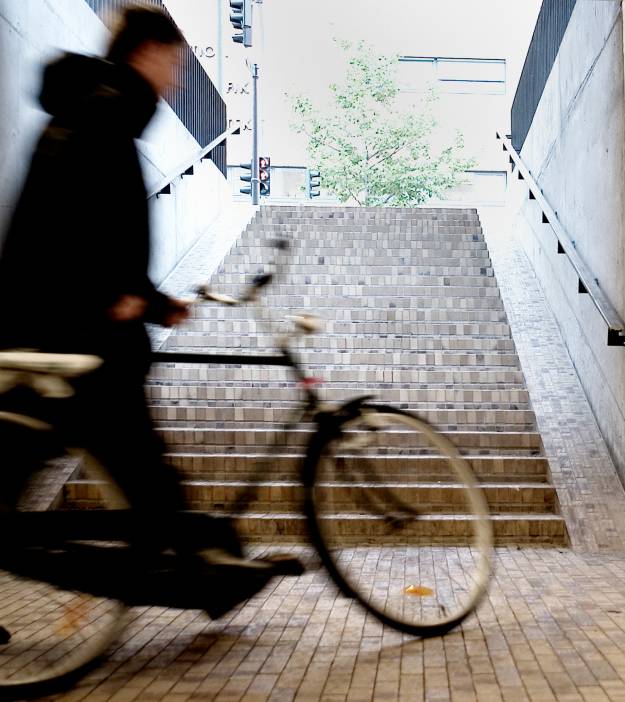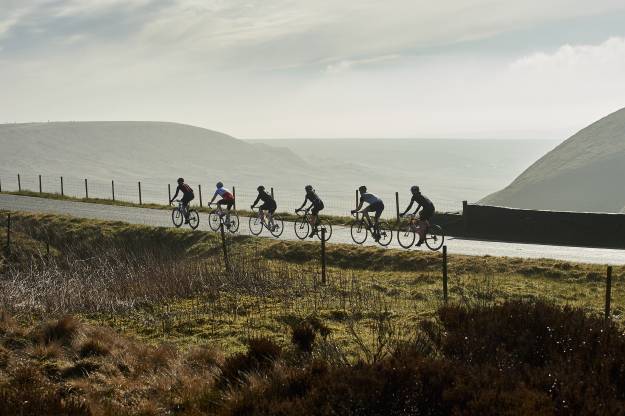Research into junction layouts and rights of way on the continent has identified a number of lessons that could be taken forward to benefit UK pedestrians, cyclists and general traffic, says Phil Jones.
We know that many would be cyclists are fearful of sharing highway space with motor vehicles, which has led authorities around the world and increasingly in the UK to provide segregated facilities alongside busy highways.
The recently completed next generation of cycle superhighways in London are concrete expressions of this policy shift and have seen large increases in the volume of cycle traffic since their opening.
But although these types of facilities significantly improve cycling comfort and safety there can still be difficulties where segregated cycle tracks cross minor side roads.
Many highway engineers fear that giving priority to cyclists will lead to collisions caused by drivers not being willing to yield or through rear end shunts as vehicles slow down or stop to turn.
However requiring cyclists to give way at frequent intervals can slow their progress to the point that they choose to remain on the carriageway. And where cyclists are given priority there is no consistent way in which this is designed or marked.

At signals the simple Advanced Stop Line (ASL) has become the default solution but is now regarded by more pro-cycling highway authorities as inadequate. ASLs are of no value during the green stage and do not properly resolve the conflict between left turning traffic and cyclists going ahead.
In London various solutions have been employed including layouts where left turning traffic is signalled separately from cyclists and other traffic travelling straight ahead.
This does prevent conflict but these arrangements are hard to fit into many places. They also make the signal staging more complex, extending cycle times and reducing junction efficiency.
The Danish approach
In Denmark – and in fact in most other countries – traffic signals operate quite differently. Pedestrians, cyclists and motor traffic going in the same direction all receive a green at the same time and vehicles turning across those on foot and bicycles have to give way.
This enables much simpler layouts which can more easily accommodate pedestrian and cycle facilities, with fewer signal stages and thus greater efficiency.

Our research therefore sought to understand how the law on turning works in Denmark, as well as Sweden and the Netherlands. We found that in Denmark there is a simple ‘universal duty to give way’ when turning, which forms the basis of all road user education and enforcement.
This rule supports the type of infrastructure found consistently across the country, which has a very good safety record for cyclists and pedestrians.
We then looked at how the Highway Code, Regulations and Statute operate in the UK to protect pedestrians and cyclists at priority junctions and signals.
We found that our rules are far from clear both in their wording and in practice – for example Rule 170 of the Code tells drivers that pedestrians who have started to cross a junction have priority but it does not say how drivers should treat cyclists crossing the same junction from a shared use path.
Similarly Rule 178 says that drivers at ASLs must give cyclists time and space to move off when the signal turns green but does not say what drivers should do when cyclists are waiting alongside them and they wish to turn left.
Addressing the gaps
As a result we have identified three potential steps to getting greater protection for pedestrians and cyclists at side roads and traffic signal junctions. These consist of changes to the Highway Code, changes to Traffic Signs Regulations & General Directions (TSRGD) and changes to Primary Legislation.
Possible amendments to 14 rules in the Code have been identified which would clarify and strengthen the requirement for drivers to give way to pedestrians and cyclists going straight ahead, whether on the carriageway, in a cycle lane, using a cycle track or when crossing the mouth of a junction on foot.

As a further alternative we have suggested how these rules could be condensed into a simple set of replacement rules requiring drivers to give way when turning.
We also suggest that square ‘elephant’s footprints’ markings are used to indicate the continuity of a cycle track across a side road, which the amended Highway Code would require drivers to give priority to.
At present this marking can only be used at traffic signals and the new style pedestrian / cycle crossings. Extending its use would increase people’s familiarity and recognition of the marking.
Perhaps most significantly changes to TSRGD could also be used to enable the use of ‘yield on turning’ markings – probably similar to zebra markings – at traffic signals.

This would allow a shift to the form of control used in most other countries, bringing substantial benefits to pedestrians and cyclists. It would also benefit drivers and bus users through reduced delay and congestion as a result of shorter cycle times and greater efficiency; and the general public due to the air quality benefits of reduced queuing.
Conventional pedestrian crossings operating on their own signal stage would still be available and would continue to be used at many junctions. The proposed change would simply offer another option.
Ideally as a final step the requirement to give way on turning would be established in primary legislation, similar to the other European countries we studied.
Next Steps
We recognise that these are bold proposals and that much more study and research needs to be done to assess their feasibility, in particular how the changes in road user behaviour could be achieved in practice.
But we firmly believe that the potential benefits, particularly for those travelling on foot and cycle, are so great that the case for this further study is compelling.
British Cycling will be raising this issue over the coming months and we hope that members of this Institution will engage with the ensuing debate.
Acknowledgement
This article has been peer reviewed by the CIHT Urban Design Panel. The views expressed are those of the author.
This article is an amended version of an article which appeared in the CIHT Transport Professionals November/December 2016












